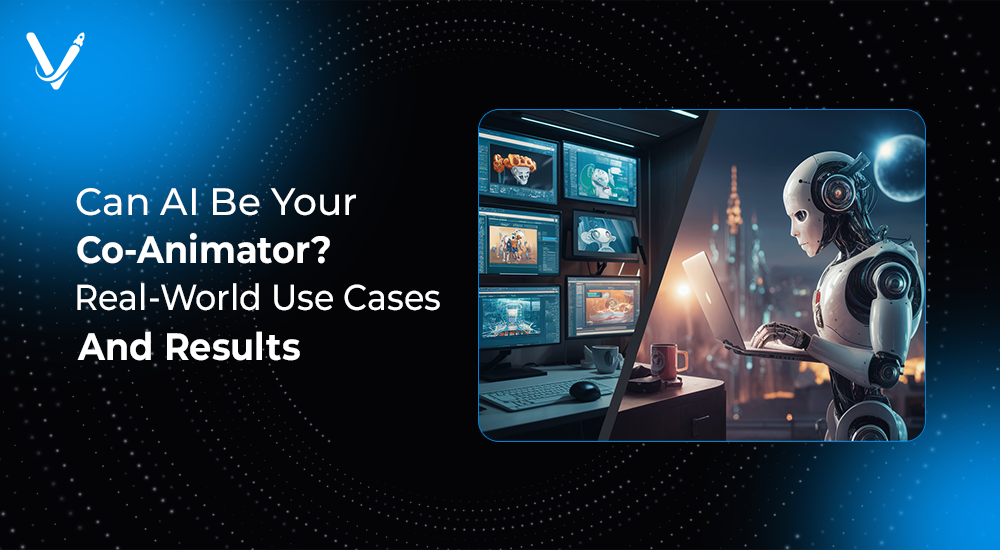Can AI Be Your Co-Animator? Real-World Use Cases and Results


- Jul 28, 2025



Animation has always been an art of patience and precision. From frame-by-frame drawings to complex 3D rigs, animators have traditionally balanced creativity with countless hours of manual work. But now, a silent revolution is reshaping the industry: AI-powered co-animation.
AI is no longer just an automation tool. It's becoming a creative collaborator—a co-animator. Artists today are turning to intelligent tools to animate scenes, generate character movements, lip-sync dialogues, and even suggest story arcs. This shift isn’t science fiction—it’s already happening in studios, indie teams, and personal projects around the world.
In this blog, we explore how artificial intelligence is helping animators create faster, smarter, and more compelling stories. Through real-world use cases, tool breakdowns, and success stories, we’ll reveal what it truly means to work alongside AI in the creative space.
AI co-animation isn’t about replacing artists—it’s about enhancing their capabilities. A true AI co-animator works like a teammate that:
This shift allows human artists to focus on the emotional and narrative core of a project while AI handles the technical heavy lifting.
AI can assist in visualizing scripts quickly through tools like Storyboard Pro integrated with AI sketch generators. With the help of models like DALL·E and MidJourney, concept art and mood boards can be generated in minutes.
AI speeds up 3D modeling with tools like Kaedim and Meshcapade which convert 2D images or sketches into fully rigged 3D models.
Perhaps the most transformative layer, AI shines brightest in the actual animation stage:
These tools reduce dependency on expensive mocap gear and give indie developers access to cinematic-level animation techniques.
One of the anthology episodes used a hybrid approach involving AI-assisted motion smoothing and character blending. The result was a seamless fusion of stylized art and fluid motion that would traditionally require months of cleanup.
Impact:
Ubisoft developed an in-house AI tool named “Ghostwriter” to help script and animate NPC dialogue and behaviors. This tool creates diverse and believable interactions for background characters without extensive manual input.
Result:
The viral game “Unrecord” utilized AI-enhanced facial animation and environmental physics to blur the line between reality and simulation. AI-driven body movements added realism that would otherwise require a full mocap studio.
Takeaway:
AI accelerates previously time-consuming steps, enabling faster iteration cycles.
AI reduces the need for large teams and expensive equipment.
With mundane tasks offloaded, animators can focus on experimentation.
AI suggestions may sometimes override artistic intent. The key is to treat AI as a collaborator, not a director.
Tip: Use AI for early drafts or idea generation and apply manual refinement for final polish.
AI tools need well-annotated datasets, which may reflect unintended bias or lack variation.
Solution:
Switching between AI tools and legacy systems can be cumbersome.
Recommendation:
Upcoming AI tools will be able to take a script and generate full scene compositions with camera movements and lighting presets.
NVIDIA’s Omniverse Audio2Face and similar technologies are paving the way for zero-delay lip sync and emotion mapping, enabling real-time character reactions in games and films.
Imagine an AI that creates a fantasy kingdom complete with NPCs, backstories, and dynamic weather systems—all ready for animation. Tools like Promethean AI and Scenario.gg are already exploring this frontier.
Is it rigging? Inbetweening? Lip sync? Choose an AI tool that addresses that specific pain point first.
Start with free or freemium tools like:
Don’t try to automate everything. Let AI handle the heavy lifting while you layer in emotional depth and storytelling.
Follow creators and communities using AI in animation:
AI in animation is not just a trend—it’s a paradigm shift. It’s changing the way stories are told, how characters move, and how worlds are built. But the heart of any animation still lies in the vision of its creator.
When used wisely, AI becomes a trusted co-animator, offering efficiency, flexibility, and creative freedom. It enables more voices to share their vision—regardless of budget, location, or team size.
At Vasundhara Infotech, we help creators embrace AI to bring their animated visions to life. Whether you're building a game, a film, or an explainer series, our team offers custom AI integration, creative tools, and development support to scale your ideas faster and smarter.
Let’s animate the future together—with AI by your side. Get in touch with us.
Copyright © 2025 Vasundhara Infotech. All Rights Reserved.